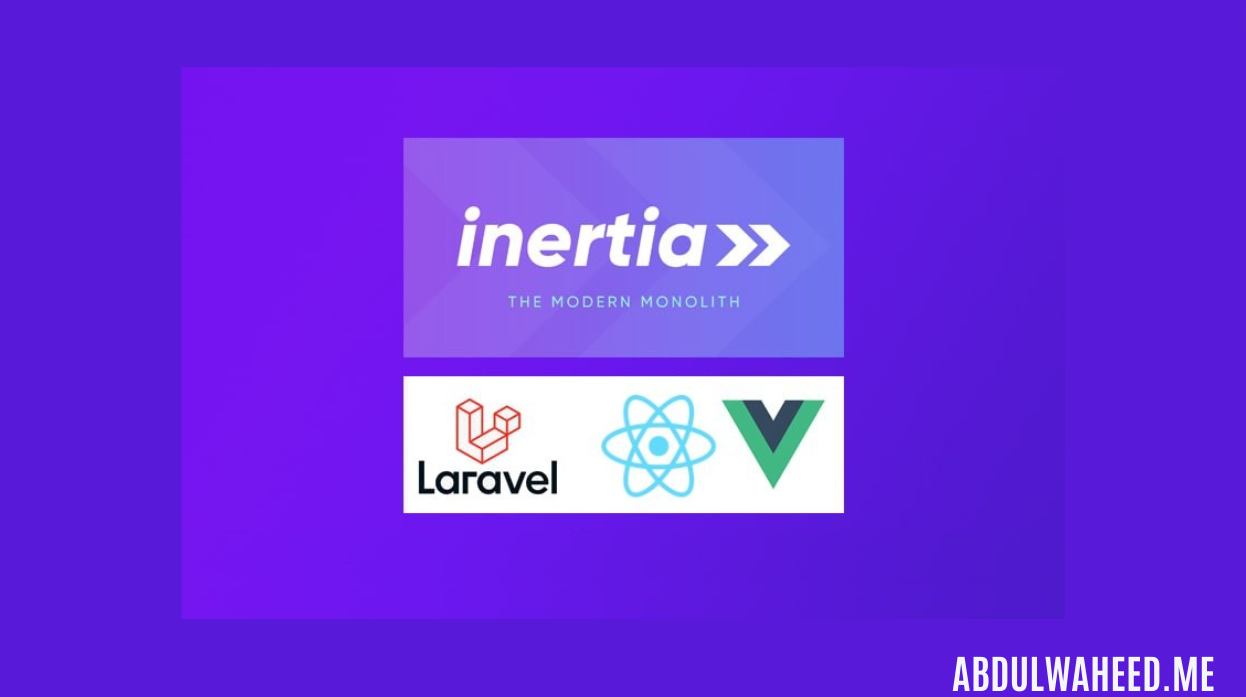A Total Direct to Laravel Idleness: Building Advanced SPAs without the Complexity
Within the ever-evolving world of web advancement, striking the correct adjust between front-end interactivity and back-end straightforwardness is frequently a challenge. Customarily, building cutting edge Single Page Applications (SPAs) implied overseeing isolated front-end and back-end ventures, frequently driving to complexities such as state synchronization, steering, and API administration. Enter Laravel Inactivity, a capable apparatus that permits you to make energetic, receptive applications without the overhead of a full SPA design.
What is Laravel Inertia?
Inertia.js could be a JavaScript library that empowers you to construct advanced SPAs utilizing Vue.js, Respond, or Svelte whereas keeping the backend rationale in Laravel. Idleness dispenses with the require for a conventional API-driven SPA design, permitting you to serve your app’s pages from your Laravel courses and utilize Vue or React as the front-end renderer.
Rather than isolating the front-end and back-end layers, Dormancy acts as a stick between them, taking care of page route, state administration, and API communication in a way that feels recognizable to Laravel engineers.
Highlights of Inactivity:
No API Layer: Disregard complex API integrative; Idleness lets you construct intelligently applications without a devoted API.
Server-Side Directing: Dormancy depends on Laravel’s steering and controllers, expelling the require for a client-side switch like Vue Switch or Respond Switch.
Shared State: Keep up a steady application state over pages without requiring to adjust front-end and back-end.
SEO-Friendly: Since Inactivity renders pages server-side, your app remains SEO-friendly with no extraordinary arrangements.
How Laravel Inertia Works
Inactivity employments Laravelâs directing and controller structure to handle demands, rendering pages on the server-side and passing them to the front-end to be rendered powerfully. The most thought behind Idleness is to serve “pages” from your server and handle the client-side interaction without the require for a conventional API layer.
Step-by-Step Workflow:
Routing and Controller: You define routes in Laravel as usual and return the front-end components from your controller.
Route::get('/dashboard', [DashboardController::class, 'index']);
public function index() {
return Inertia::render('Dashboard', [
'user' => auth()->user(),
'stats' => $this->getStats(),
]);
}
In this example, the Dashboard component is rendered using Inertia,data passed from the back-end.
Front-End Component: The component (e.g., Vue or React) will receive the data and render it.
export default {
props: {
user: Object,
stats: Object,
},
mounted() {
console.log(this.user, this.stats);
}
}
This way, the state and data are directly tied to the back-end, eliminating the need for API calls.
Page Transitions:Dormancy consequently oversees page moves, making route between courses feel quick and smooth without reloading the page. Once you explore, Inactivity sends an AJAX ask to the server, recovers the following page, and renders it without a full reload.
Why Use Laravel Inertia?
Laravel Idleness brings together the finest of both universes: the control of server-side systems and the interactivity of cutting edge front-end libraries like Vue or Respond. Here are a few reasons why engineers adore Laravel Dormancy.
No Complex Front-End API
When building conventional SPAs, you regularly ought to set up an API layer and oversee how your front-end interacts with it. With Laravel Inactivity, you do not ought to stress approximately isolated API endpoints or client-side state administration apparatuses like Redux or Vuex. All your commerce rationale remains in Laravel, which disentangles information stream.
Server-Side Routing
Idleness leverages Laravelâs server-side steering, permitting you to characterize your courses within the back-end as you’d in a conventional Laravel app. This can be a enormous advantage since you’ll maintain a strategic distance from copying directing rationale between the front-end and back-end.
Improved Developer Productivity
Designers who are recognizable with Laravelâs biological system can rapidly get begun with Idleness, as they donât have to be learn complex SPA design designs. Since Laravel proceeds to handle the routing and information, you’ll center on building highlights instead of overseeing complex synchronization between the front and back conclusion.
Shared State Across Pages
Idleness offers state between pages out of the box, making it simpler to oversee client sessions, worldwide information, or indeed notices without bouncing through the loops of client-side state administration.
SEO and Performance
Conventional SPAs require additional arrangements to create them SEO-friendly, while Laravel Inertiaâs server-side rendering makes it simple for look motors to creep your substance without relinquishing execution.
Setting Up Laravel Inertia
Let’s walk through a basic setup of Laravel Inertia with Vue.js.
1. Install Inertia
First, you’ll need to install the necessary Inertia packages for Laravel and your front-end framework.
composer require inertiajs/inertia-laravel npm install @inertiajs/inertia @inertiajs/inertia-vue
2. Configure Middleware
Next, set up the Inertia middleware by registering it in your app/Http/Kernel.php file:
protected $middlewareGroups = [
'web' => [
\App\Http\Middleware\HandleInertiaRequests::class,
],
];
3. Create a Front-End Component
In your resources/js/Pages directory, create a Vue component called Dashboard.vue.
<template>
<div>
<h1>Welcome, {{ user.name }}</h1>
<p>Here are your stats: {{ stats }}</p>
</div>
</template>
<script>
export default {
props: {
user: Object,
stats: Object,
}
}
</script>
4. Define a Route and Controller
Finally, define a route and controller method in Laravel.
Route::get('/dashboard', [DashboardController::class, 'index']);
public function index() {
return Inertia::render('Dashboard', [
'user' => auth()->user(),
'stats' => $this->getStats(),
]);
}
That’s it! Your Laravel Idleness application is presently set up, and you’ll be able begin building intelligently pages whereas keeping the effortlessness of a conventional Laravel app.
Conclusion
Laravel Dormancy streamlines the method of building present day SPAs without the bother of overseeing isolated front-end and back-end projects. With Inactivity, you’ll use Laravelâs effective steering, confirmation, and database dealing with, whereas still building energetic client interfacing with Vue or Respond.
In the event that youâre a Laravel engineer looking to build feature-rich, intuitively applications with minimal overhead, Inertia.js may be a incredible arrangement. Itâs not almost speeding up advancement but moreover around keeping up effortlessness and control.


